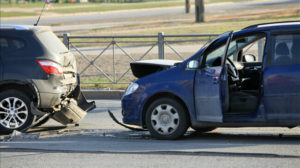 We constantly deal with our personal injury clients not having the right auto insurance coverage to enjoy full protection after being injured in a collision. We felt it worthwhile to go over some important information about auto insurance in a blog, so that people can read this and make the necessary changes to their policies. We just want our clients/friends/family to be protected in the best way possible, so that when something bad does happen, we are able to help them recover as much as possible for their injuries. It is much easier for you to take some time to fix this now, then it will be for you and us to try to deal with insurance issues after an injury has occurred. In this article, I focus on the types of auto insurance that affect personal injury claims, as opposed to damage to your vehicle.
We constantly deal with our personal injury clients not having the right auto insurance coverage to enjoy full protection after being injured in a collision. We felt it worthwhile to go over some important information about auto insurance in a blog, so that people can read this and make the necessary changes to their policies. We just want our clients/friends/family to be protected in the best way possible, so that when something bad does happen, we are able to help them recover as much as possible for their injuries. It is much easier for you to take some time to fix this now, then it will be for you and us to try to deal with insurance issues after an injury has occurred. In this article, I focus on the types of auto insurance that affect personal injury claims, as opposed to damage to your vehicle.
Buying auto insurance is something almost all of us have done and are used to, but it is confusing as to what you are actually receiving in return for your monthly insurance premium payment. Because most people do not understand what they are really getting when they buy auto insurance, most people do not buy the right type of coverage or buy enough coverage.
Liability Coverage
The minimum amount of bodily injury liability coverage in Washington State that every driver must have is $25,000 per person and a total of $50,000 per collision. Many people simply buy that minimum amount of coverage and move on, which is a major mistake.
If you buy the minimum amount of coverage and cause a collision, the first $25,000-$50,000 that you owe is collected from your auto insurance policy, and after that you are personally liable. That means that if you have any valuable assets like bank accounts, retirement accounts, or a house, the injured party can sue you personally and recover their damages from your personal assets. To avoid that type of a financial catastrophe, we recommend that you maintain an auto insurance policy with at least $100,000 per person and $300,000 per collision.
Personal injury auto collision cases generally do not exceed those amounts unless there is severe injury or death. You will be surprised to see that this massive increase in your liability coverage does not cause a huge increase to your monthly payment.
Underinsured Motorist (UIM) Coverage
Another error people make when buying auto insurance is to decline “UIM” coverage. UIM coverage exists to protect you when someone else causes a collision with you and that at-fault driver either does not have any insurance (against state law) or does not have enough insurance to cover your injury claim. Usually, someone with no insurance or inadequate insurance also has very little in the way of personal assets. This means that you might have no way to recover the money that you deserve, even when you can prove that the at-fault driver caused all of your injury/harm.
Any time you have a personal injury claim, you must first recover from the insurance of the at-fault party. In an instance where you have injuries and the at-fault party has no insurance or insufficient coverage, if you have UIM coverage, you can seek a financial recovery from your own UIM insurance policy. This claim against your own UIM policy would cover the amount of your damages over and above what you received from the at-fault party’s insurance policy. We recommend at least $100,000 per person for your UIM policy. The slight addition in monthly premium is far outweighed by the massive potential benefit to you and your family of having UIM coverage in the event of a collision.
Personal Injury Protection (PIP) Coverage
The last important piece to make sure you have as part of your auto insurance policy is “PIP” coverage. PIP is used to pay all of your medical bills that accrue as you undergo necessary medical treatment after a collision. This is the simplest and best way to get your medical bills paid. If you have PIP coverage, your medical bills will be paid promptly and often at a discounted rate.
When an injured party does not have PIP, medical providers often do not get paid out of the recovery at the end of the injury case. In those situations, the injured party is often forced to deal with unnecessary bother and stress from bill collection activity while the case is ongoing. Based upon the discounts that the PIP insurance provider enjoys, the injured party will end up owing much less money at the end of the case when paying back the PIP amounts out of the injury recovery. This is compared to paying medical bills out-of-pocket, where the medical bills will accrue at higher “retail” rates.
We hope that this information is helpful and that you can use it to make sure that you are protected against all of the harms that can happen out on the roadways.